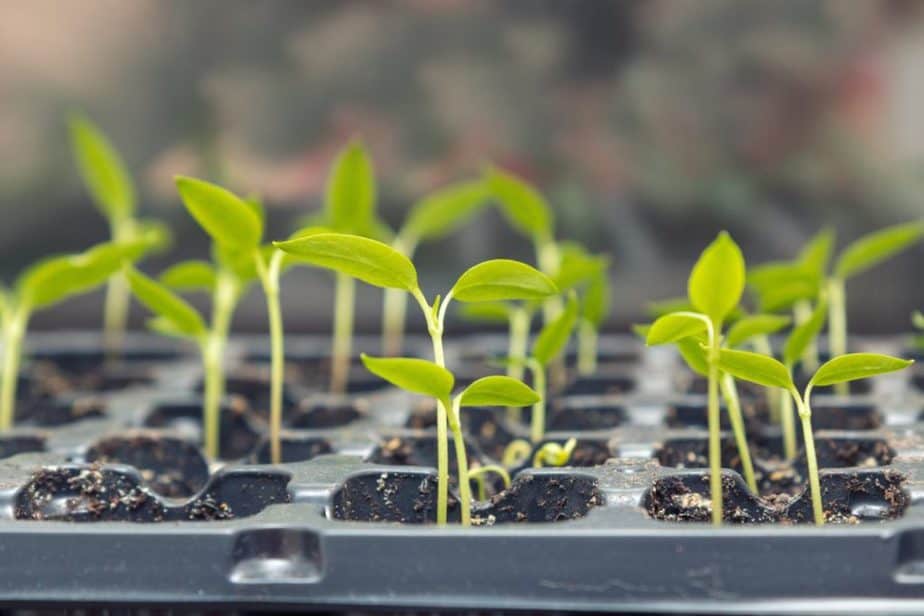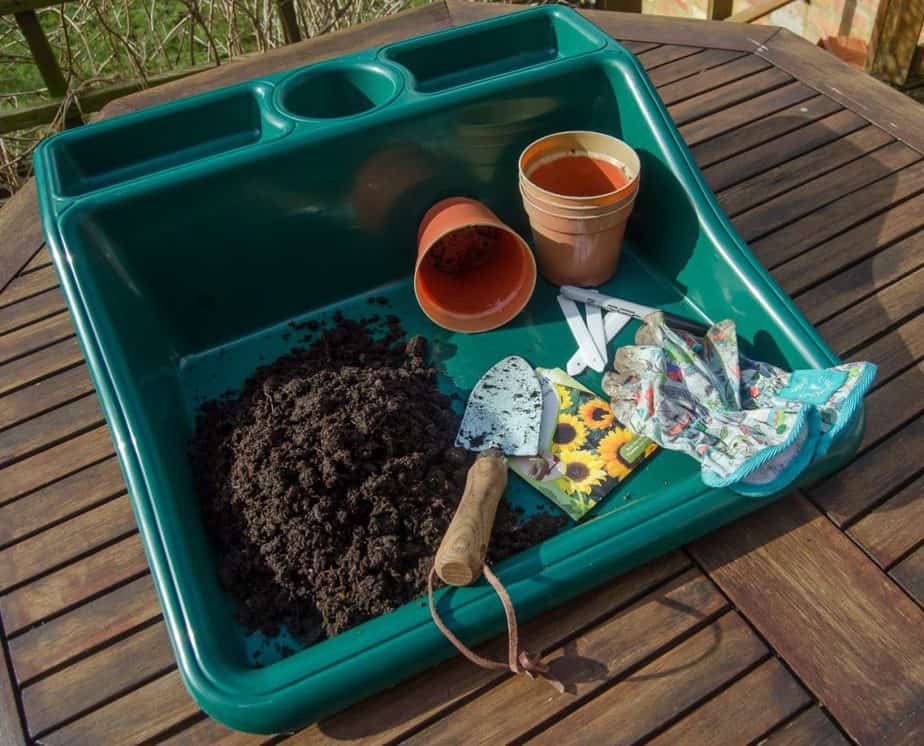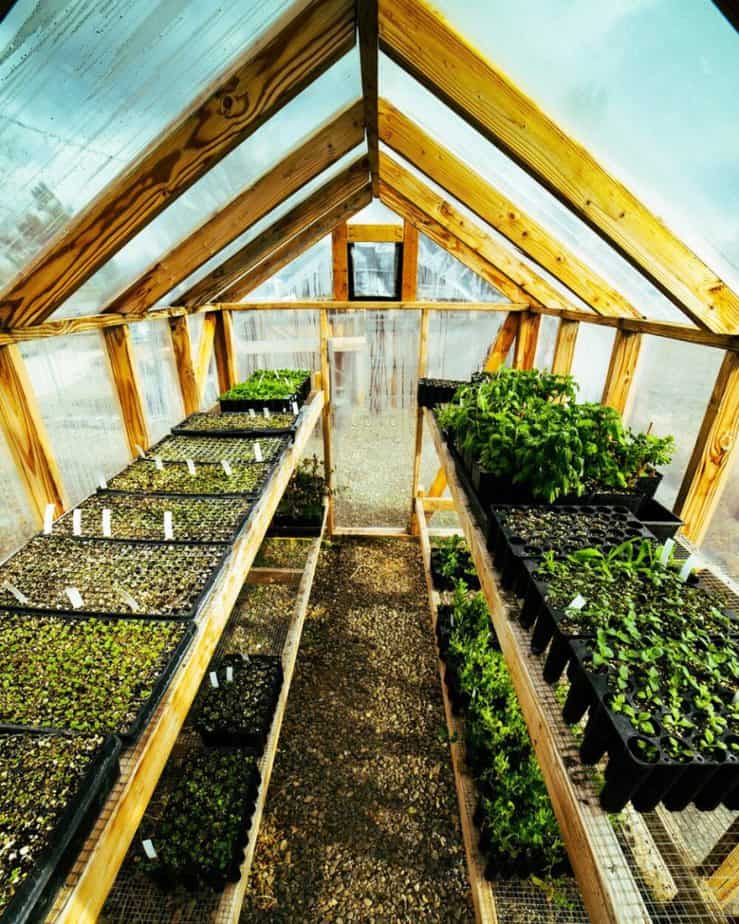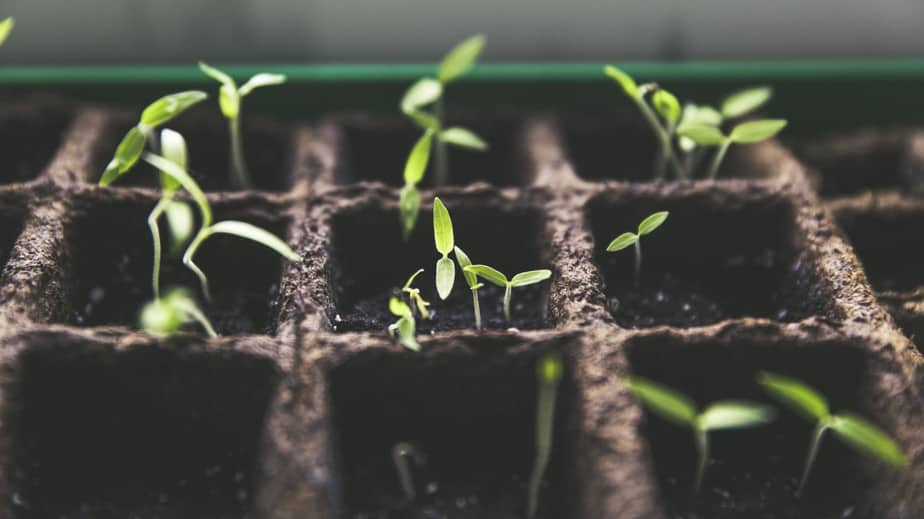As spring approaches, it’s time to start thinking about what you will grow this year in your greenhouse and when to start.
Whether you intend to keep your crops inside the greenhouse or move them outside when the weather warms up, now is the time to get a jump start on the growing season. Learn how to start seeds in a greenhouse by reading the helpful guide below!
When to Plant Seeds in a Greenhouse

The best time to sow seeds in your greenhouse will depend on several factors. You’ll first need to decide when you want to harvest your crops. If you plan to begin your harvest early in the season or harvest throughout, you’ll need to start seeds earlier than if you wanted a late harvest.
If you’re planning on transferring your crops outdoors, you’ll also need to calculate the average date of the last frost in your growing zone. The last frost date is important because you don’t want to move your plants outside before the weather is ready to warm up for the season.
Most gardeners recommend you start seeds between 8 and 10 weeks before the average date of the last frost. Plants that are more sensitive to cold temperatures can be started 6 to 8 weeks before the last frost date.
Of course, this isn’t a guarantee that it won’t freeze after this date, but it’s an excellent guide to use. If you plan on keeping your crops inside the greenhouse throughout your growing season, you won’t need to worry about this.
Another critical factor to consider is the greenhouse itself. If your greenhouse is unheated, you’ll also need to be mindful of the temperature. However, a heated greenhouse will allow you more flexibility in the growing season.
Learn about heating a greenhouse without electricity or about the best greenhouse heaters on the market!
If you need help figuring out what zone you live in or the average last frost date, a quick internet search should yield plenty of resources, or you can call your local nursery or garden center.
Supplies for Planting Seeds in a Greenhouse

One of the most obvious supplies you’ll need is your seeds. Once you’ve determined what kind of crops you’d like to grow in your greenhouse this season, you can purchase the seeds from a local nursery or your favorite online retailer. Check out the guides below for immediate information.
- Top 10 Beginner Greenhouse Plants
- Best Greenhouse Crops for Fall
- Guide to the Best Greenhouse Crops for Winter
The second most important item on your shopping list will be soil. The type of soil you use will depend on the crops you’re growing. Some crops, like many vegetables and flower species, enjoy plenty of moisture, so your typical gardening soil will suffice.
If you’re growing plants that prefer drier conditions, such as succulents and cacti, you’ll need a faster draining soil to prevent the soil from retaining too much moisture. Getting the moisture content right is essential in preventing disease and pest infestations, so choose wisely.
Finally, you’ll need to decide what you want to grow your seeds in. If your greenhouse has raised beds, you may choose to plant your seeds directly in the beds. However, if you plan on moving the plants outdoors once it warms up, you’ll need something more portable and transplant-friendly.
Seed trays are a relatively inexpensive product that can make starting your seeds in the greenhouse an easy process. Some trays have individual holes for seeds to be planted into to make transplanting into your garden more straightforward, while others are a flat tray to allow seeds to be sprinkled over the top.
Some seed trays come with plastic covers to help retain humidity, which can be especially helpful if you live in a dry environment. However, use caution in warm climates as the seed tray cover inside a greenhouse might retain more heat and moisture than the seedlings can handle.
Environmental Factors to Consider to Start Seeds
When you start seeds, you’ll need to create the perfect environment in your greenhouse to encourage the seeds to germinate. This isn’t difficult for most gardeners, especially if you’ve timed the planting right.
Temperature
Most seeds require a warm environment for germination. If you have an unheated greenhouse in a cold climate, this can be a bit of a challenge, but it’s not impossible to keep your seedlings warm.
Heat mats can be a great way to keep the seeds warm enough to germinate and help the seedlings survive until the warmth of spring arrives. Another benefit to heat mats is that they provide consistent temperatures, which isn’t always possible in an unheated greenhouse due to the fluctuations in temperature throughout the day.
Of course, if you’re lucky enough to have a heated greenhouse or live in a warmer climate, you may be able to skip the heat mats.
Humidity
Though it depends on the crops you’re growing, most seedlings prefer a higher humidity level than mature plants. Humidity domes are a great way to keep your seeds and seedling happy while maintaining a more consistent environment.
As previously mentioned, some seed trays come with humidity domes or have domes that can be purchased separately. If you’re planting your seeds in raised beds, you can always cover the beds with a thin sheet of plastic to accomplish the same goals.
Of course, too much humidity can also be harmful, as it provides the ideal environment for disease. Many pests also enjoy humid climates, so it’s essential to find that perfect middle ground.
If you live in a climate that tends to be humid, you’ll need to ensure that your greenhouse has proper ventilation to allow fresh air to flow through.
You can also use either a humidifier or dehumidifier to control humidity levels depending on your needs.
Light
As we all know, the right amount of light is key in growing happy, healthy plants. Seedlings should be located in an area of your greenhouse that receives a good amount of light, or they will require artificial lighting.
Artificial lighting can be a great way to provide any type of seedling with adequate light, no matter how short the days are. Without proper light, your seedlings can become leggy or stretched out.
While leggy seedlings aren’t necessarily a bad thing long-term, artificial lighting is typically an easy and inexpensive method of ensuring your seedlings stay compact and healthy. Whether you need enough lighting for a single seed tray or a large commercial operation, there are plenty of lighting options to suit your needs.
Ready to Start Seeds in your Greenhouse?

Now you know how to start seeds in a greenhouse, so get them going already! The sooner you get the seeds started, the sooner you can be eating your own homegrown fruits and veggies. Comment below how yours turn out and any helpful tips and tricks that you pick up along the way.




